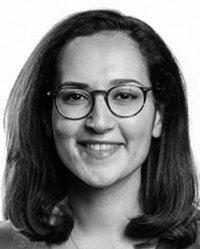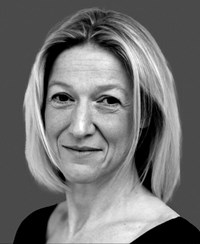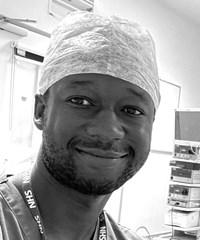ENT features
The cochlear implant clinic multidisciplinary team meeting
The world’s first cochlear implant clinic was in Melbourne, where multichannel devices were designed by Graeme Clark at the beginning of the cochlear implant era. We are fortunate to hear from Claire Iseli and Rob Briggs, surgeon members of this...
By the people, for the people: a multidisciplinary facial nerve clinic with a difference
Facial nerve palsy is regularly seen in ENT clinics. Underlying diagnoses are excluded, and the patient is often then discharged to ‘see how it goes’, with or without an ophthalmology referral. Here, Catherine Meller describes how she and her team...
The role of the multidisciplinary team in laryngology and airway – the Charing Cross experience
As the National Centre for Airway Reconstruction, the Charing Cross laryngology MDT provides expert care to patients with airway problems as well as voice and swallowing disorders. In this article, the team explain their raison d’etre and why the MDT...
The multidisciplinary voice clinic
In his inimitable way, Nick Gibbins tells us why the voice clinic is the highlight of his week – and his very own field of dreams. The voice clinic has come a long way in the last 40 years. The...
Covid-19 Tips and insights
The following blog articles have been kindly provided by Eric Levi. For more from Eric Levi, visit https://ericlevi.com/blog/ COVID19 affects everyone Posted on 01/04/2020 by Eric Levi Here’s a report from the Center for Disease Control and Prevention looking at...
Addressing ear and hearing care through task sharing: the Malawian experience
How can ear and hearing care be addressed in a setting with limited resources? Wakisa Mulwafu, Chris Prescott and Johan Fagan present an innovative model for training ear surgery technicians to perform endoscopic myringoplasty under local anaesthesia on a large...
Acoustic shock: definitions and clinical aspects
Acoustic shock, a previously little-known and poorly understood clinical entity, came to the public’s attention in 2019 due to a high-profile legal case of a musician at the Royal Opera House. In this fascinating article, Andrew Parker and William Parker...
Anaesthesia for excision of vestibular schwannomas
The ‘shared airway’ relationship between ENT surgeons and anaesthetists is well documented. But ENT surgery and anaesthesia interact in numerous other ways, particularly in complex skull base surgery. What do our anaesthetic colleagues want us to know about vestibular schwannoma...
Hearing rehabilitation after vestibular schwannoma surgery
Hearing rehabilitation is a key focus of the management of patients with vestibular schwannoma. But how do we rehabilitate hearing when the cochlear nerve has been damaged by tumour, irradiation, or resective surgery? Mathieu Trudel, Scott Rutherford and Simon Lloyd...
Ossicular reconstruction
Ossicular reconstruction often yields disappointing results, even for the most experienced and skilled of otologists. John Dornhoffer and David Walker explain that the most important determinant of outcome is the patient’s middle ear environment, and offer some valuable words of...
Active middle ear implants and bone-anchored hearing systems
The implantable hearing device market has grown significantly over recent years. But as conventional hearing aids improve and cochlear implant candidacy widens, what is the role for active middle ear implants and bone anchored hearing systems, and how should we...
TRIBUTE: Ugo Fisch
EAONO collected in tributes from colleagues of Ugo Fisch who passed away on 12th December 2019 at the age of 88.




















